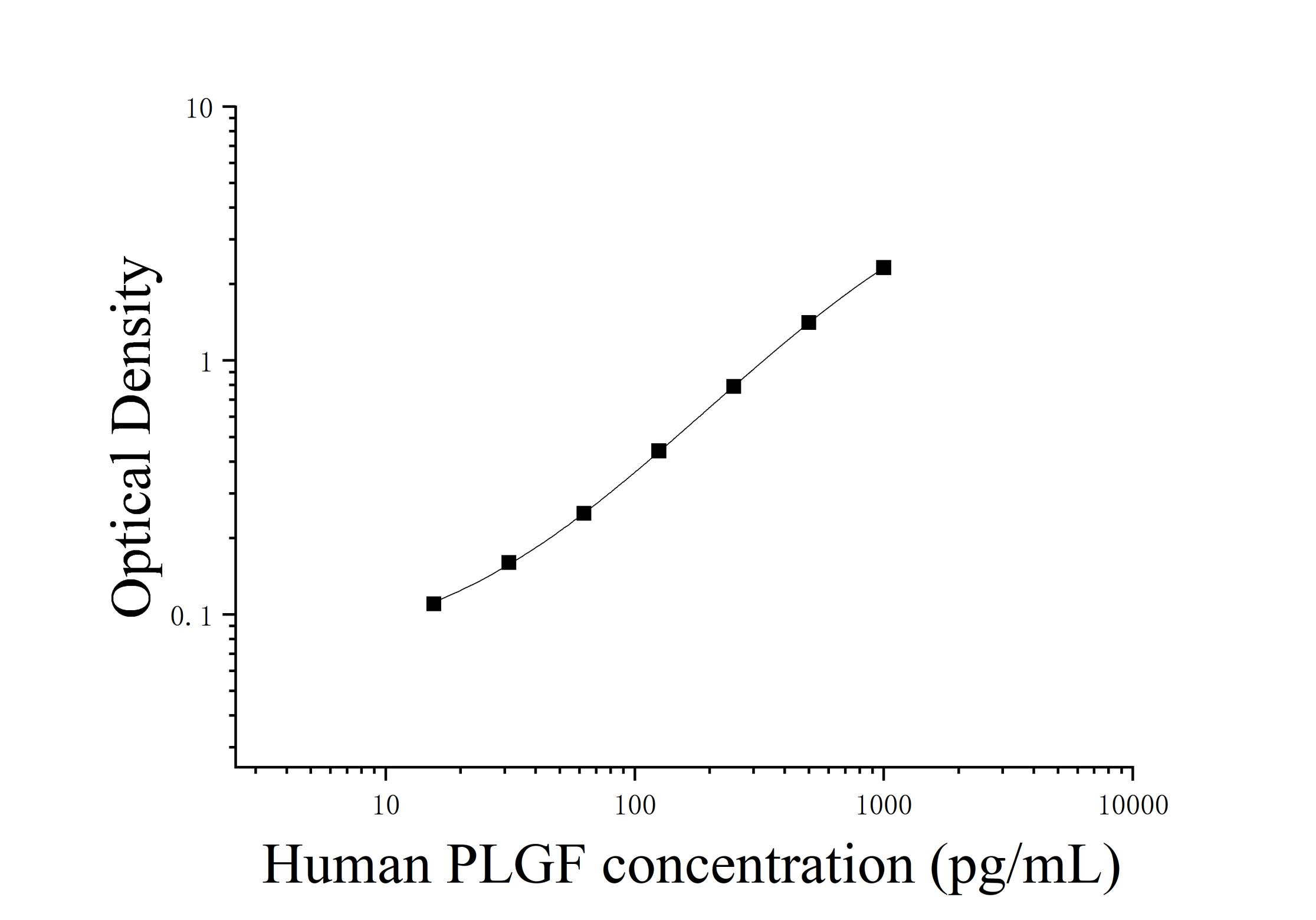Product Details
Product Details
Product Specification
| Usage |
Experimental equipment required for the experiment: 1. Microplate reader (450nm) 2. High-precision pipette and gun tips: 0.5-10uL, 5-50uL, 20-200uL, 200-1000uL 3. 37℃ constant temperature box 4. Distilled water or deionized water Sample processing and requirements: Serum: Place the whole blood sample collected in the serum separation tube at room temperature for 2 hours or at 4℃ overnight, then centrifuge at 1000×g for 20 minutes, and take the supernatant, or store the supernatant at -20℃ or -80℃, but avoid repeated freezing and thawing. Plasma: Collect the specimen using EDTA or heparin as an anticoagulant. Centrifuge the specimen at 1000 × g for 15 minutes at 2-8°C within 30 minutes of collection. The supernatant can be assayed or stored at -20°C or -80°C, but avoid repeated freezing and thawing. Tissue homogenization: Rinse the tissue with pre-chilled PBS (0.01M, pH 7.4) to remove residual blood (lysed red blood cells in the homogenate will affect the measurement results). Weigh the tissue and mince it. Add the minced tissue to the appropriate volume of PBS (generally a 1:9 weight-to-volume ratio, e.g., 1 g of tissue sample to 9 mL of PBS. The specific volume can be adjusted according to experimental needs and recorded. It is recommended to add protease inhibitors to the PBS) in a glass homogenizer and grind thoroughly on ice. To further lyse tissue cells, the homogenate can be sonicated or repeatedly frozen and thawed. Finally, centrifuge the homogenate at 5000 × g for 5-10 minutes, and the supernatant can be assayed. Cell Lysis Buffer: Gently wash adherent cells with ice-cold PBS, then trypsinize and collect cells by centrifugation at 1000×g for 5 minutes. Suspension cells can be collected directly by centrifugation. Wash collected cells three times with ice-cold PBS and resuspend in 150-200 μL of PBS per 1×10^6 cells (it is recommended to add protease inhibitors to the PBS; if the cell count is very low, reduce the PBS volume appropriately). Disrupt the cells by repeated freeze-thaw cycles or sonication. Centrifuge the extract at 1500×g for 10 minutes at 2-8°C, and remove the supernatant for analysis. Cell Culture Supernatant: Centrifuge at 1000×g for 20 minutes. Remove the supernatant for analysis or store at -20°C or -80°C, avoiding repeated freeze-thaw cycles.Other biological fluids: Centrifuge at 1000xg for 20 minutes, remove the supernatant, and test. Pre-test preparation: 1. Remove the test kit from the refrigerator 10 minutes in advance and equilibrate to room temperature. 2. Prepare the standard gradient working solution: Add 1 mL of universal diluent to the lyophilized standard, let it stand for 15 minutes to completely dissolve, then gently mix (concentration is 200 pg/mL). Then dilute to the following concentrations: 200 pg/mL, 100 pg/mL, 50 pg/mL, 25 pg/mL, 12.5 pg/mL, 6.25 pg/mL, 3.125 pg/mL, and 0 pg/mL. Serial dilution method: Take seven EP tubes and add 500uL of universal diluent to each. Pipette 500uL of the 200pg/mL standard working solution into the first EP tube and mix thoroughly to make a 100pg/mL standard working solution. Repeat this procedure for subsequent tubes. The last tube serves as a blank well; there is no need to pipette liquid from the penultimate tube. See the figure below for details. 3. Preparation of biotinylated detection antibody working solution: Centrifuge the concentrated biotinylated antibody at 1000×g for 1 minute 15 minutes before use. Dilute the 100× concentrated biotinylated antibody to a 1× working concentration with universal diluent (e.g., 10uL concentrate + 990uL universal diluent). Prepare and use immediately. 4. Prepare the enzyme conjugate working solution: 15 minutes before use, centrifuge the 100× concentrated enzyme conjugate at 1000×g for 1 minute. Dilute the 100× concentrated HRP enzyme conjugate to a 1× working concentration with universal diluent (e.g., 10 μL of concentrate + 990 μL of universal diluent). Prepare immediately. 5. Prepare the 1× wash solution: Dispense 10 mL of 20× wash solution into 190 mL of distilled water (concentrated wash solution removed from the refrigerator may crystallize; this is normal. Allow to stand at room temperature until the crystals have completely dissolved before preparing). Procedure: 1. Remove the desired strips from the aluminum foil bag after equilibration at room temperature for 10 minutes. Seal the remaining strips in a ziplock bag and return to 4°C. 2. Sample addition: Add 100 μL of sample or standard of varying concentrations to the corresponding wells. Add 100 μL of universal diluent to the blank wells. Cover with a film and incubate at 37°C for 60 minutes. (Recommendation: Dilute the sample to be tested at least 1-fold with universal diluent before adding it to the ELISA plate. This will reduce the impact of matrix effects on the test results. The sample concentration should be multiplied by the corresponding dilution factor when calculating the final sample concentration. It is recommended to run replicates for all test samples and standards.) 3. Add Biotinylated Antibody: Remove the ELISA plate and discard the liquid without washing. Add 100 μL of Biotinylated Antibody Working Solution directly to each well. Cover with a film and incubate at 37°C for 60 minutes. 4. Wash: Discard the liquid and add 300 μL of 1x Wash Solution to each well. Let stand for 1 minute, shake off the wash solution, and pat dry on absorbent paper. Repeat this process three times (a plate washer can also be used). 5. Add Enzyme Conjugate Working Solution: Add 100 μL of Enzyme Conjugate Working Solution to each well. Cover with a film and incubate at 37°C for 30 minutes. 6. Washing: Discard the liquid and wash the plate five times as in step 4. 7. Adding substrate: Add 90 μL of substrate (TMB) to each well, cover with a sealing film, and incubate at 37°C in the dark for 15 minutes. 8. Adding stop solution: Remove the ELISA plate and add 50 μL of stop solution directly to each well. Immediately measure the OD value of each well at a wavelength of 450 nm. Calculating experimental results: 1. Calculate the average OD value of the standard and sample replicates and subtract the OD value of the blank well as a correction factor. Plot the standard curve of the four-parameter logistic function on double-logarithmic graph paper, with concentration as the horizontal axis and OD value as the vertical axis. 2. If the sample OD value is higher than the upper limit of the standard curve, dilute the sample appropriately and retest. Multiply the sample concentration by the corresponding dilution factor. 
|
| Theory | This kit uses a double-antibody sandwich enzyme-linked immunosorbent assay (ELISA). Sample, standard, biotin-labeled detection antibody, and HRP conjugate are sequentially added to microwells pre-coated with Placenta Growth Factor (PLGF) capture antibody. After incubation and washing, the sample is developed using the substrate TMB. TMB converts to blue under the catalysis of HRP and to yellow under the action of acid. The intensity of the color is positively correlated with the amount of Placenta Growth Factor (PLGF) in the sample. The absorbance (OD) is measured at 450 nm using a microplate reader to calculate the sample concentration. |
| Source | Human |
| Synonym | Human Placenta Growth Factor ELISA Kit |
| Detection Type | Double antibody sandwich method |
| Background | Placental growth factor (PGF) is a protein encoded by the PGF gene. Placental growth factor (PGF) is a member of the VEGF (vascular endothelial growth factor) subfamily—a key molecule in angiogenesis and vasculogenesis, particularly during embryogenesis. The primary source of PGF during pregnancy is placental trophoblasts. It is also expressed in many other tissues, including the villous trophoblast. The PGF gene is a protein-coding member of the vascular endothelial growth factor (VEGF) family. The PGF gene is expressed exclusively in human umbilical vein endothelial (HUVE) cells and the placenta, ultimately implicated in angiogenesis. Specifically, PGF plays a role in the growth and differentiation of trophoblasts. Trophoblasts, particularly extravillous trophoblasts, are responsible for invading the uterine wall and maternal spiral arteries. Extravillous trophoblasts generate a larger blood vessel for the developing fetus that is immune to maternal vasoconstriction. This is crucial for increasing blood flow and reducing resistance. Proper vascular development in the placenta is crucial for meeting the increased blood demands of the fetus during late pregnancy. Under normal physiological conditions, PGF is also expressed at low levels in other organs including the heart, lungs, thyroid gland, and skeletal muscle. |
| General Notes | 1. Strictly adhere to the specified incubation time and temperature to ensure accurate results. All reagents must be at room temperature (20-25°C) before use. Refrigerate reagents immediately after use. 2. Improper plate washing may result in inaccurate results. Ensure that all liquid in the wells is aspirated thoroughly before adding substrate. Do not allow the wells to dry out during incubation. 3. Remove any residual liquid and fingerprints from the bottom of the plate, as this will affect the OD value. 4. The substrate developer solution should be colorless or very light in color. Do not use substrate solution that has turned blue. 5. Avoid cross-contamination of reagents and specimens to prevent erroneous results. 6. Avoid direct exposure to strong light during storage and incubation. 7. Do not expose any reagents to bleaching solvents or the strong fumes emitted by bleaching solvents. Any bleaching agent will destroy the biological activity of the reagents in the kit. 8. Do not use expired products, and do not mix components with different product numbers and batches. 9. Recombinant proteins from sources other than the kit may not be compatible with the antibodies in this kit and will not be recognized. 10. If there is a possibility of disease transmission, all samples should be managed properly and samples and testing devices should be handled according to prescribed procedures. |
| Storage Temp. | If the unopened kit is stored at 4°C, the shelf life is 6 months. |
| Test Range | 3.12-200 pg/mL |
| Applications | Serum, plasma, tissue homogenate, cell lysate, cell culture supernatant and other biological fluids |
Composition
| Name | 9 6 T Configuration | Remarks |
| Pre-coated 96-well enzyme plate | 8 holes×12 strips | None |
| Standard | 2 bottles |
Dilution according to the instructions
|
|
Universal diluent
|
2×20mL
|
None
|
|
Concentrated biotinylated detection antibody (100×)
|
120uL
|
Dilution according to the instructions
|
|
Concentrated biotinylated detection antibody (100×)
|
120uL
|
Concentrated enzyme conjugate (100×)
|
|
20× Wash solution
|
2×10mL
|
Dilute according to instructions
|
|
Substrate (TMB)
|
10mL
|
None
|
|
Stop solution
|
6mL
|
none
|
|
Sealing film
|
4 sheets
|
None
|
|
Instructions
|
1 serving
|
None
|


